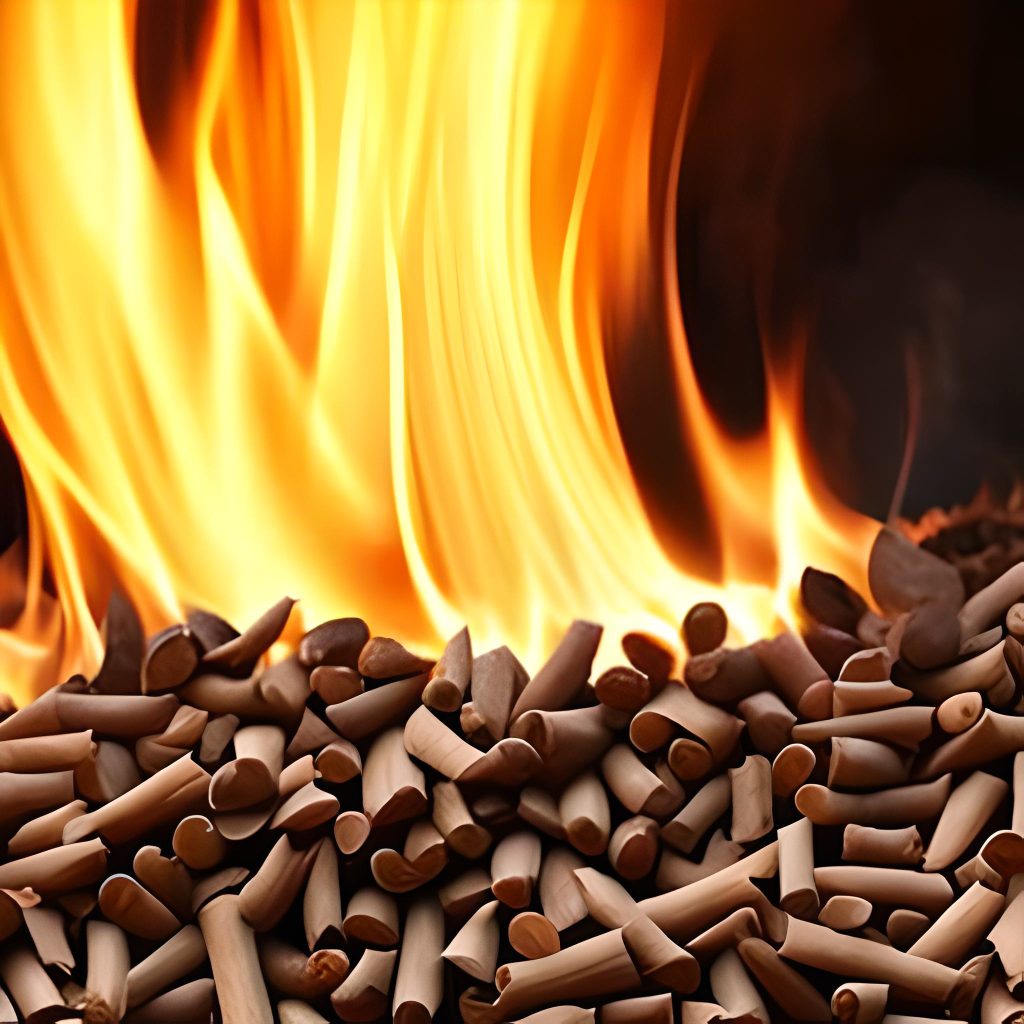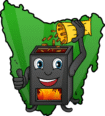In the middle of winter no-one likes to be cold. In Tasmania it’s common to find people running wood heaters and sometimes even heat pumps non-stop at least for a few weeks or months of the year during winter. Pellet heaters are a great alternative to wood heaters and provide a much better heating experience than heat pumps, but can you run them non-stop like a wood heater? The short answer is yes, you can run a pellet heater 24 hours a day if you want. However, and I will go into detail below why, but it depends on the quality of wood pellet and more importantly there’s no need to run a pellet heater non-stop like a wood heater.

How Pellet Heaters Work
If you’ve stumbled onto this website and haven’t heard of pellet heaters or pellet fires as they are sometimes called in Tasmania, here’s a quick breakdown on how a pellet heater works. Pellet heaters burn wood pellets to create heat. The kind of heat you get is very similar to a wood heater but there’s none of the hassle you have with firewood. There’s no need to split, stack, and dry wood pellets. They come in bags and are ready to burn them the day you buy them. Pellet heaters switch on and off like a heat pump, so they are easy to use but they create real heat because there’s a fire that burns the wood pellets.
Running a Pellet Heater 24 Hours a Day
So, obviously if you want to run a pellet heater non-stop you’ll need enough wood pellets to keep it going. This means I’ll assume you are refilling your hopper with pellets as needed. Most hoppers in pellet heaters are 15 kg to 30 kg, so you can get about 1 to 2 days of burn time before you need to top up or refill the hopper. If you want to run it overnight then before you go to sleep fill the hopper up with pellets so its full. I’d also set the pellet heater to low heat, you’ll be asleep so you shouldn’t need your house to be super warm.
So, assuming you are refilling it with wood pellets what else do you need to be aware of? If you want to run a pellet heater non-stop you need to be burning high quality pellets. High quality pellets are ones that produce very little ash and no or very little clinker. The less ash and clinkers you get from pellets, the longer you can run your pellet heater without worrying about having to clean it.
Clinkers and Pellet Heaters
If you burn poor or low quality pellets in a pellet heater, you’ll get more ash and importantly more clinker. I’ve written about clinkers in pellet heaters elsewhere but clinkers are basically impurities or stuff that can’t be burnt in wood pellets. That’s why low or cheap pellets suffer from more clinkers, because the wood waste used to create them was cheaper and thus isn’t as high quality or clean. This doesn’t mean you shouldn’t burn cheap wood pellets. I am a huge fan of EcoPellet budget wood pellets in Tasmania and happily burn them with no problems.
However, if you want to run your pellet heater 24 hours a day for as long as possible then you need to burn pellets that burn clean and don’t leave anything, or leave very little, in the burn pot. Lower quality pellets suffer from more clinkers. Clinkers impact how well the fire in the burn pot in the pellet heater burns. They start of small and the longer you run your pellet heater the bigger they get. This is why they will impact if you can run your pellet heater non-stop or not. If you are burning very cheap wood pellets that burn dirty and produce clinkers, then you’ll get clinkers on a daily basis.
You’ll still be able to run the pellet heater, but if you don’t clean the burn pot after a day or so, like you should anyway (check any pellet heater manual if you don’t believe me this is what manufacturers recommend), you’ll start see the fire doesn’t burn properly and if the clinker gets too big the fire won’t burn at all. Clinkers basically block the holes in a burn pot so the fire can’t burn. If it gets too big the fire just won’t be able to burn and your pellet heater will probably shut down once it detects something has gone wrong.
Why You Don’t Need to Run a Pellet Heater Non-stop
Even though you can run pellet heaters non-stop, provided you are burning good quality pellets, there’s no need to. Pellet heaters start and stop like heat pumps. I know people don’t like to wake up to a cold house (myself included), so use the timer pellet heaters come with and have it switch on at 5 am in the morning or an hour before you get up. You’ll wake up to warm house and will have saved money because you weren’t running the heater all night burning pellets and wasting money.
If you are going to work then switch the pellet heater off if no-one is at home. Yes, you can let the heater run while you aren’t at home, but by switching it off you will have peace of mind and won’t be worried that something might go wrong. Now, if you are just going down the street to buy something then I leave my pellet heater running. So, if it’s a short trip out, I let my pellet heater run. If I am going out for hours, then I switch it off and switch it on via the APP on my phoe remotely.
Hopefully can you see why I say you don’t need to run a pellet heater non-stop. You definitely can do it. There are many pellet heater owners in the USA and throughout Europe who live in freezing environments who have to heat their house 24 hours a day. Many of them use pellet heaters and run them non-stop for days before giving them a brief clean before starting them back up again. However, in Australia there’s no need to do this if you don’t want to. Pellet heaters have a bunch of features that help you save money, and because they are convection heaters, they can quickly heat up an area and your house.
What if You Want to Run a Pellet Heater 24 Hours a Day
OK, if you absolutely MUST run your pellet heater non-stop then the absolute best thing you can do is buy and burn high quality wood pellets. Like I previously mentioned, keep our hopper topped up at least once a day. Most pellet heaters will be running on low, so even a 15kg small hopper should last about 20 hours or so. The longer you run a pellet heater, the more ash and potential clinker build up you will get. That’s why using high quality pellets is key to running a pellet heater non-stop. You’ll get less ash and basically no clinker when compared to cheaper wood pellets.
What if you are burning cheap pellets and want to run your pellet heater for as long as possible? If you’ve only got cheap pellets then you’ll need to shut your pellet heater down at some point and clean it. How often depends on how much clinker you get from the pellets. At a guess it will be probably once every 24 to 48 hours of continuous burn time. You’ll notice the clinker in the burn pot has become a problem because the flame won’t be burning properly. It’ll look lazy because the clinker is blocking the holes in the burn pot stopping air that is needed to create an efficient fire.
Even if you are burning high quality pellets you will at some point need to switch your pellet heater off and clean it. You may not get any clinkers but ash will eventually become a problem but it could be at least a week or more before you need to shut your pellet heater down and clean the ash out. When you need to do this, switch the heater off, wait for it to cool down so you aren’t vacuuming out hot ask and then switch it back on.
I don’t recommend running a pellet heater days on end without cleaning it and emptying the burn pot and ash at least once a week, but if you want to then burn high quality pellets.
Summary
Pellet heaters are a convenient and efficient alternative to wood heaters and heat pumps, especially during the cold winter months in Tasmania. While it is possible to run a pellet heater 24 hours a day, it largely depends on the quality of wood pellets used. High-quality pellets produce minimal ash and clinkers, allowing for continuous operation. However, running a pellet heater non-stop is not necessary, as they can start and stop quickly like heat pumps. By using a timer, you can save money while maintaining a warm house. If you insist on running your pellet heater constantly, be sure to use high-quality pellets and clean the burn pot and ash at least once a week.
